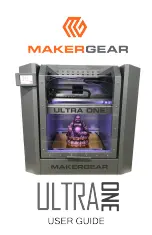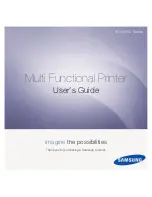
69
68
EAP (Extensible Authentication Protocol)
Defines how to pass authentication information between the device and authentication server. The
authentication is handled by the EAP type: FAST, TLS, TTLS, etc.
FAST (Flexible Authentication via Secure Tunneling)
Cisco Systems® developed this authentication protocol. It does not use certificates to authenticate, but a
PAC (Protected Access Credential), which is managed dynamically by the server. The PAC is distributed
one at a time to the client manually or automatically.
Gateway
Allows connections (communications) between different subnets on a network.
Infrastructure Mode
Requires an access point to communicate with other devices on the network. In infrastructure mode,
wireless devices can communicate with each other or with a wired network.
IP Address
One of the available boot methods. It is a protocol used by devices that know their MAC address, but
do An Internet Protocol identifier for a device on a network. It consists of four 3-digit numeric fields,
separated by periods. Each number can be zero to 255. An IP address has two components, the
network address and the host address. Most company networks have ranges for their IP addresses.
Boot Method
The wireless print server uses this method to obtain an IP address. Can be set to Auto, DHCP, BOOTP,
RARP, or Static. Boot Tries The number of times the device tries to get an IP address from the server
when using the BOOTP and DHCP methods.
LEAP (Lightweight Extensible Authentication Protocol)
Cisco Systems® introduced this authentication protocol and provides mutual authentication with unique
WEP keys for each user. New keys are issued based on a time limit. Changing the WEP key time limits
provides additional security.
LPD/LPR
A printer protocol that uses TCP/IP to establish connections between printers on a network. Also known
as Line Printer Daemon/Line Printer Remote.
MAC Address or Media Access Control
A hardware address (6-byte) that uniquely identifies each node of a network.The MAC address is set
during manufacturing and does not change. Also, two Network Interface Cards (NIC) will not have the
same value.
MSCHAPv2
The Microsoft® version of CHAP. It is a three-way handshake protocol that is more secure than PAP. It
provides mutual authentication between devices.
NIC or Network Interface Card
An adapter (board or card) that can be inserted into a device, so the device can be connected to a
network. The NIC converts data from the device into the form transmitted or received from the network.
Node
A processing location on a network. The location can be a workstation, computer, or printer. Each Node
has a unique MAC address.
Open Authentication
This allows any device to authenticate and then attempt to communicate with the access point. Any
wireless device can authenticate with the accesspoint, but if WEP is used, the device can communicate
only if its WEP keys match the access point’s. There is no challenge that occurs, you either have the
correct key or not when you communicate with the access point. By eliminating the challenge process, it
actually makes this more secure than shared key authentication
PAP (Password Authentication Protocol)
A simple authentication protocol used with PPP (Point-to-Point Protocol). It is a plain text password
system, which is not very secure. Pathname/The location of a particular file or directory that includes the
full path to the needed filename or directory. This is a combination of path and filename.
PEAP (Protected Extensible Authentication Protocol) :
Authenticates clients into a network using only server-side certificates, which makes implementing and
administering a wireless LAN easier.
Ping
A way to determine if a device is accessible. It sends a packet to the specified address and waits for a
reply.
Protocol
This is the way two devices transmit data between each other, including error checking, data
compression, and how messages start and end.
PSK (Pre-Shared Key)
Authentication mode of WPA used in SOHO environments. The key value(or pass-phrase) is used for
network authentication only (not data encryption). It does not use a RADIUS server like the other modes,
but uses a shared key to provide the initial authentication with the access point or host.
RADIUS (Remote Authentication Dial-In Server)
This is an authentication server, such as the Cisco® ACS, Microsoft® IAS, etc.
RARP
One of the available boot methods. The device sends an RARP request and the RARP server responds
with an IP address. The device knows its MAC address and the server responds with the IP address for
it.






































